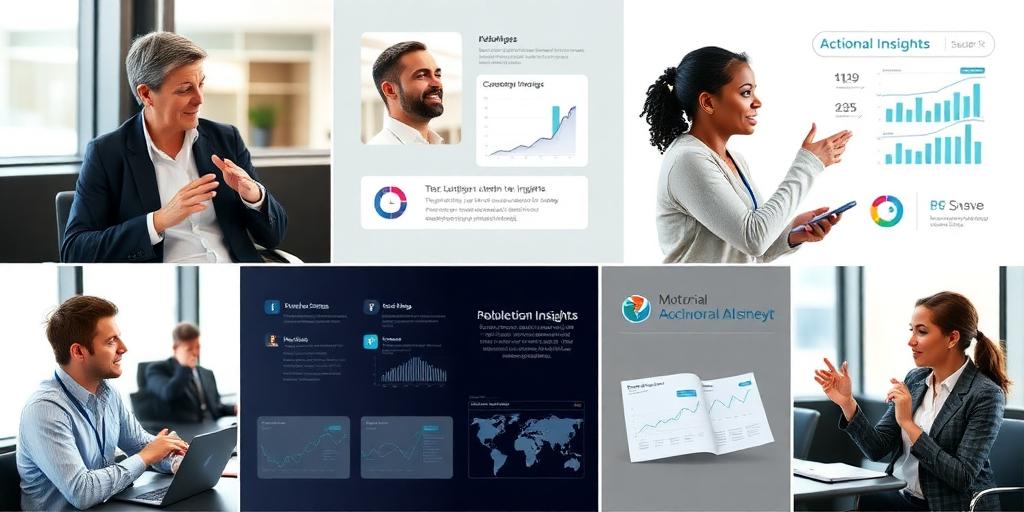How to Conduct Effective User Interviews (and Get Actionable Insights)
User interviews are a goldmine for understanding your users' needs, behaviors, and pain points. But conducting effective interviews requires more than just asking questions. It demands careful planning, skillful execution, and insightful analysis. This post will guide you through the process, ensuring you extract actionable insights that drive product development and improve user experience.
1. Define Your Objectives and Research Questions
Before diving into interviews, clarify your goals. What specific information are you seeking? What problems are you trying to solve? Defining clear objectives will help you formulate targeted research questions and stay focused during the interviews. For example:
- Objective: Understand why users are abandoning the checkout process.
- Research Questions:
- What are the biggest frustrations users encounter during checkout?
- Are there any confusing or unclear steps in the process?
- What alternatives do users consider when they abandon checkout?
2. Recruit the Right Participants
Your interview results will only be as good as the participants you recruit. Ensure you're targeting users who represent your core audience and have relevant experience with your product or service. Consider factors like demographics, usage patterns, and customer journey stage. Use a screening questionnaire to filter potential participants and ensure they meet your criteria. Aim for a diverse group to capture a wide range of perspectives. Consider these points when recruiting:
- Define your target user: Outline the characteristics of the ideal interview participant.
- Use multiple recruitment channels: Leverage email lists, social media, user communities, and recruitment agencies.
- Offer incentives: Consider offering a gift card or other compensation for their time.
3. Develop a Structured Interview Guide
A well-structured interview guide is essential for conducting consistent and focused interviews. It should include a mix of open-ended and closed-ended questions, as well as probing questions to dig deeper into participants' responses. Start with broad, introductory questions to build rapport and then gradually move towards more specific and sensitive topics. Here are some tips for crafting effective questions:
- Open-ended questions: Encourage detailed responses and uncover unexpected insights (e.g., "Tell me about your experience using our product.").
- Closed-ended questions: Gather specific information and quantify user behavior (e.g., "How often do you use our app?").
- Probing questions: Explore underlying motivations and clarify ambiguous answers (e.g., "Can you tell me more about why you felt that way?").
4. Conduct the Interviews with Empathy and Active Listening
During the interviews, create a comfortable and non-judgmental environment where participants feel safe to share their honest opinions. Practice active listening by paying close attention to both verbal and non-verbal cues. Ask clarifying questions and summarize their responses to ensure you understand their perspective. Remember to:
- Be empathetic: Show genuine interest in their experiences and perspectives.
- Avoid leading questions: Don't steer participants towards a specific answer.
- Take detailed notes: Capture key quotes, observations, and insights.
5. Analyze and Synthesize Your Findings
After conducting the interviews, it's time to analyze and synthesize your findings. Start by transcribing the interviews and then look for recurring themes, patterns, and pain points. Use qualitative data analysis techniques like thematic analysis or affinity mapping to organize and categorize your data. Focus on identifying actionable insights that can inform product decisions and improve user experience. Remember to:
- Code your data: Assign labels or codes to segments of text that relate to specific themes or concepts.
- Create an affinity map: Group related ideas and insights to identify key themes.
- Prioritize insights: Focus on the most impactful and actionable findings.
6. Translate Insights into Actionable Recommendations
The final step is to translate your insights into actionable recommendations. What specific changes can you make to your product, service, or marketing strategy based on what you've learned? Prioritize recommendations based on their potential impact and feasibility. Share your findings with relevant stakeholders and collaborate on implementing the recommended changes. Consider:
- Developing user stories: Frame recommendations in terms of user needs and goals.
- Creating prototypes: Test potential solutions with users to validate your ideas.
- Iterating based on feedback: Continuously improve your product based on user input.
By following these steps, you can conduct effective user interviews that yield actionable insights, leading to better product development and a more satisfying user experience.









